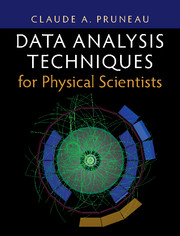1 - The Scientific Method
Published online by Cambridge University Press: 24 October 2017
Summary
What the Brain Does
From the moment a child is born, her brain is flooded with signals generated by her senses, including smells, sounds, images, touches, and tastes, as well as various other messages produced by her internal organs. Her brain readily engages in processes of pattern recognition and classification to “organize” all these data. This pattern recognition forms the basic elements of perception or views of reality the child will gather from this moment on. Slowly but surely, her brain will start to organize the data into mental models of the world that surrounds her: If I cry, somebody comes, feeds me, holds me, and it feels good .
At first, her perceptions are crude and simple, but with time, they progressively become more and more sophisticated. And soon, with the emergence of language abilities, her modeling of the world acquires tags and labels. She communicates the things she likes and dislikes, her wants, and what she doesn't want. And, as her senses and motor skills develop, she becomes an avid explorer of her immediate environment, discovering and adding to the categories, that is, the models already partially in place. The process is slow, sometimes laborious, but ineluctably, her brain engages in increasingly sophisticated pattern recognition and progressively forms complex and subtle representations of the world. This process eventually explodes in a rich and intense search for meaning, through her adolescence and early adulthood, as her brain nears full maturity. In time, her brain becomes a sophisticated pattern recognition engine that excels at detecting, sometimes inventing, patterns of all kinds, and making connections between the various entities that inhabit her world. Quite naturally, and with perhaps relatively limited awareness of her mental processes, she becomes an intuitive model builder, arguably some form of prescientific state of mind endowed with curiosity, a vast capacity for inquiry, and extensive intellectual resources that enable her not only to witness the world, but also become one of its actors, to experiment, and even to shape reality.
Though the storyline of the development of a human from infant to adulthood is fascinating, the reader might ask why it is relevant as an introduction to a book on data analysis techniques?
- Type
- Chapter
- Information
- Data Analysis Techniques for Physical Scientists , pp. 1 - 14Publisher: Cambridge University PressPrint publication year: 2017

